High up in the clouds, at an altitude of around 4,633 meters (15,200 ft), lies one of the most spiritual and surreal trekking destinations in India — Hemkund Sahib. It is the highest Gurudwara in the world, surrounded by massive Himalayan peaks, alpine meadows, and a glacier-fed lake.
But here’s what most people don’t know: the journey to Hemkund Sahib is not just a religious yatra — it’s a life-changing Himalayan trek. Along the way, you’ll witness jaw-dropping peaks, discover forgotten villages, and explore lakes and ridges that never make it to Instagram.
Let’s dive deep into this guide that’s not only about Hemkund Sahib, but everything around it that makes this region a trekker’s dream and a pilgrim’s blessing.
Table of Contents
Where is Hemkund Sahib Located?
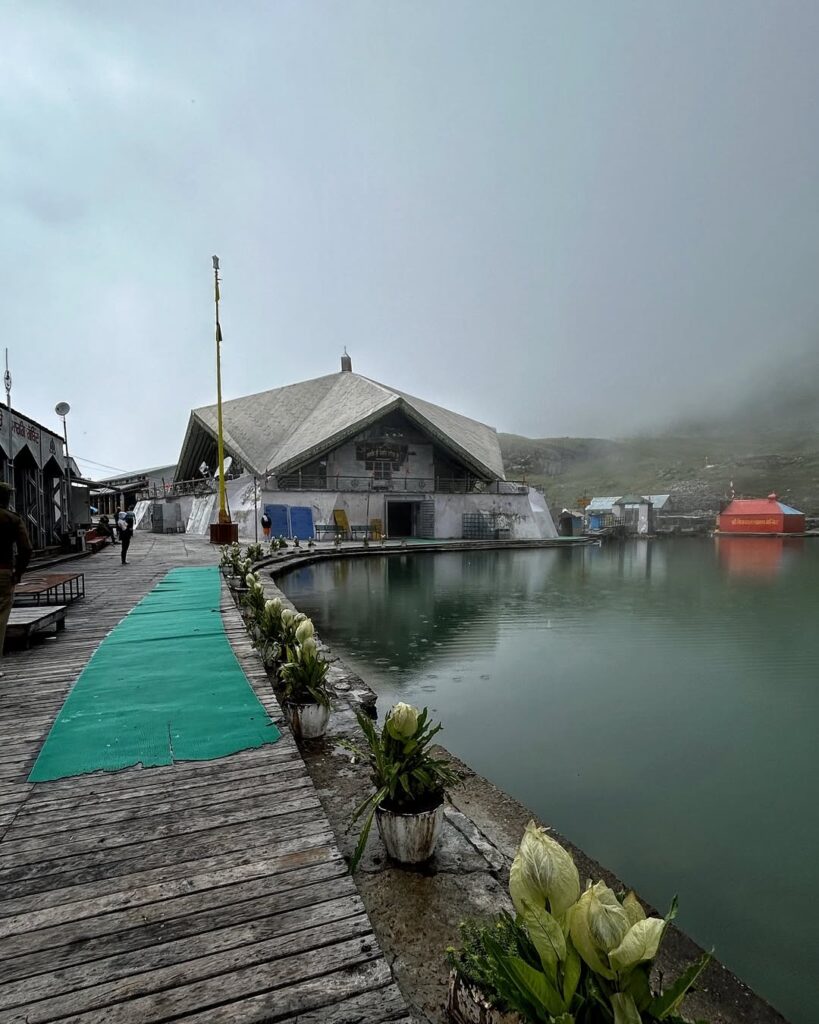
Hemkund Sahib sits in the Chamoli district of Uttarakhand, tucked between snow-covered Himalayan peaks. It is situated within the Nanda Devi Bio Reserve and just next to the Valley of Flowers National Park.
- Altitude: 4,633 meters (15,200 ft)
- Nearest town: Govindghat
- Base village for trek: Ghangaria (around 3,050m)
How to Reach Hemkund Sahib
Getting to Hemkund Sahib is a multi-step journey — both spiritual and physical.
- Rishikesh/Haridwar to Joshimath
- Distance: Around 270 km
- Travel time: 9 to 10 hours by bus, taxi, or private vehicle
- Distance: Around 270 km
- Joshimath to Govindghat
- Distance: 20 km
- Travel time: 1 hour by road
- Distance: 20 km
- Govindghat to Ghangaria
- Trek: 9 km uphill
- You can walk, take a mule, or book a helicopter ride
- Ghangaria is the base village for Hemkund Sahib and Valley of Flowers
- Trek: 9 km uphill
- Ghangaria to Hemkund Sahib
- Trek: 6 km (very steep, takes 3 to 5 hours)
- Path is stone-paved but can be tough due to high altitude
- Trek: 6 km (very steep, takes 3 to 5 hours)
The Gurudwara: Hemkund Sahib’s Sacred Story
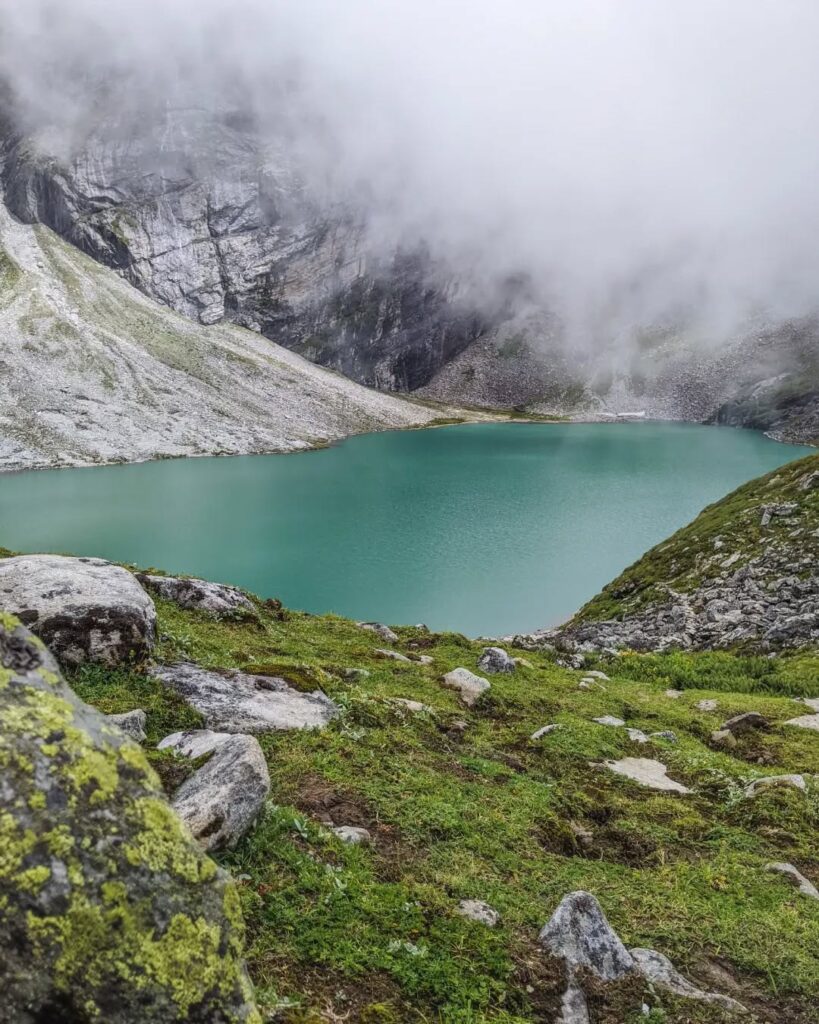
Hemkund Sahib is dedicated to the tenth Sikh Guru, Guru Gobind Singh Ji. It is believed that he meditated here in a previous lifetime. According to his autobiography, Bachitra Natak, this was the place where he attained enlightenment.
- The Gurudwara is built beside a glacial lake with crystal-clear water.
- The Langar (free kitchen) serves hot tea and khichdi, which feels heavenly in freezing weather.
- A Laxman Temple nearby is linked to Lord Ram’s brother, Laxman, who is believed to have meditated here.
The Trek to Hemkund Sahib
The final stretch from Ghangaria to Hemkund Sahib is a steep 6 km trek. This path tests your strength and patience. But once you reach the top, the peaceful lake and the Gurudwara make it all worth it.
People from all over India, of different ages and backgrounds, come to Hemkund Sahib. Some are here to pray, some are here to trek, but most leave with a feeling of peace.
Peaks You Can See from Hemkund Sahib
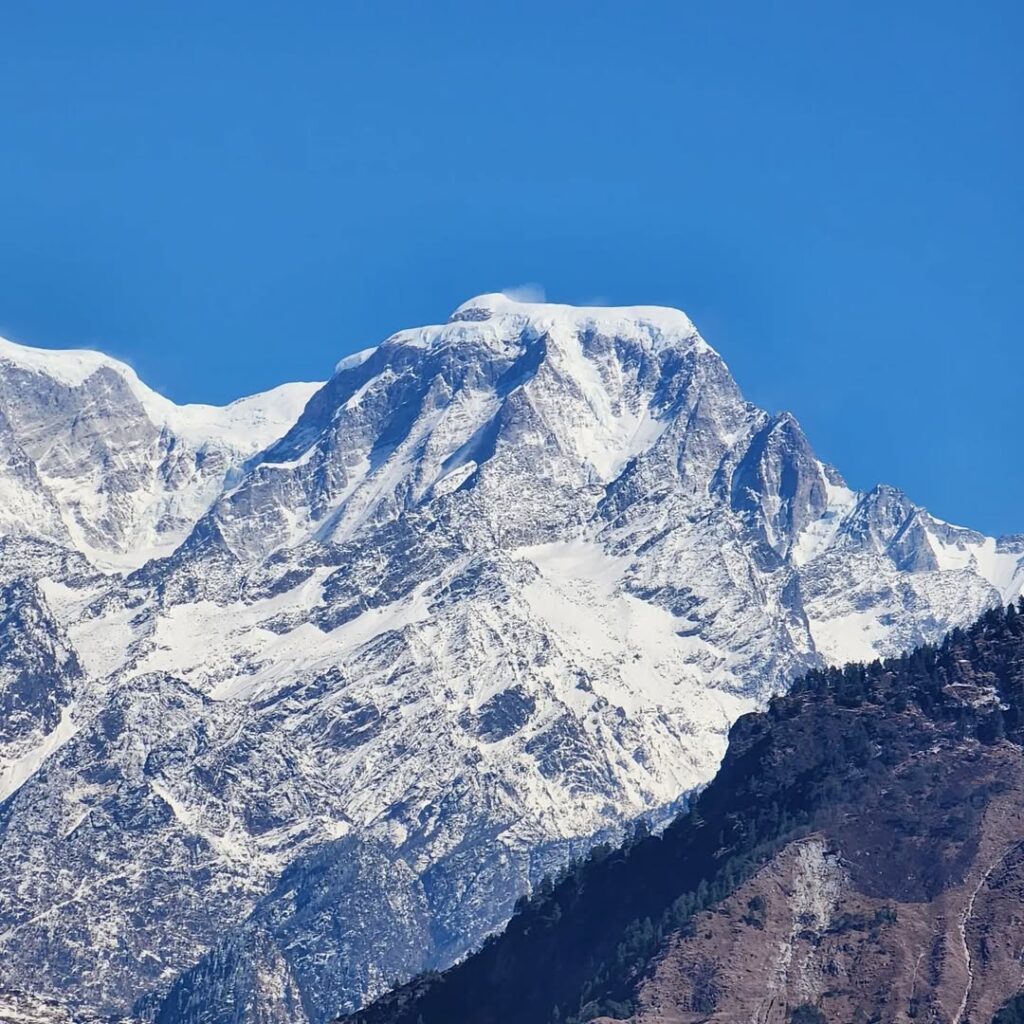
The area around Hemkund Sahib is surrounded by high Himalayan mountains. On a clear day, you can see several snow-covered peaks:
- Nilkanth (6,596 m) – a sharp peak often seen from the Valley of Flowers
- Hathi Parvat (6,727 m) – shaped like an elephant, clearly visible on the trek
- Ghori Parvat (6,598 m) – standing near Hathi Parvat
- Chaukhamba Massif (7,138 m) – sometimes visible from Ghangaria
- Saptrishi Peaks – a group of peaks around Hemkund Sahib
These peaks are not always named on tourist maps, but they are known by locals and trekkers.
Valley of Flowers Trek – A Bonus Adventure Nearby
Just 4 km from Ghangaria, Valley of Flowers Trek is one of India’s most beautiful treks.
- Best time to visit: Mid-July to August
- Known for: More than 500 types of wildflowers
- Distance: 4 km one-way from Ghangaria
- Entry ticket fee: ₹150 for Indians, ₹600 for foreigners
The valley is open from June to early October. It was discovered by a British mountaineer, Frank Smythe, in 1931. The valley looks like a garden from a fairytale, with streams, clouds, and flowers all around.
Hidden Places Near Hemkund Sahib That Most People Miss
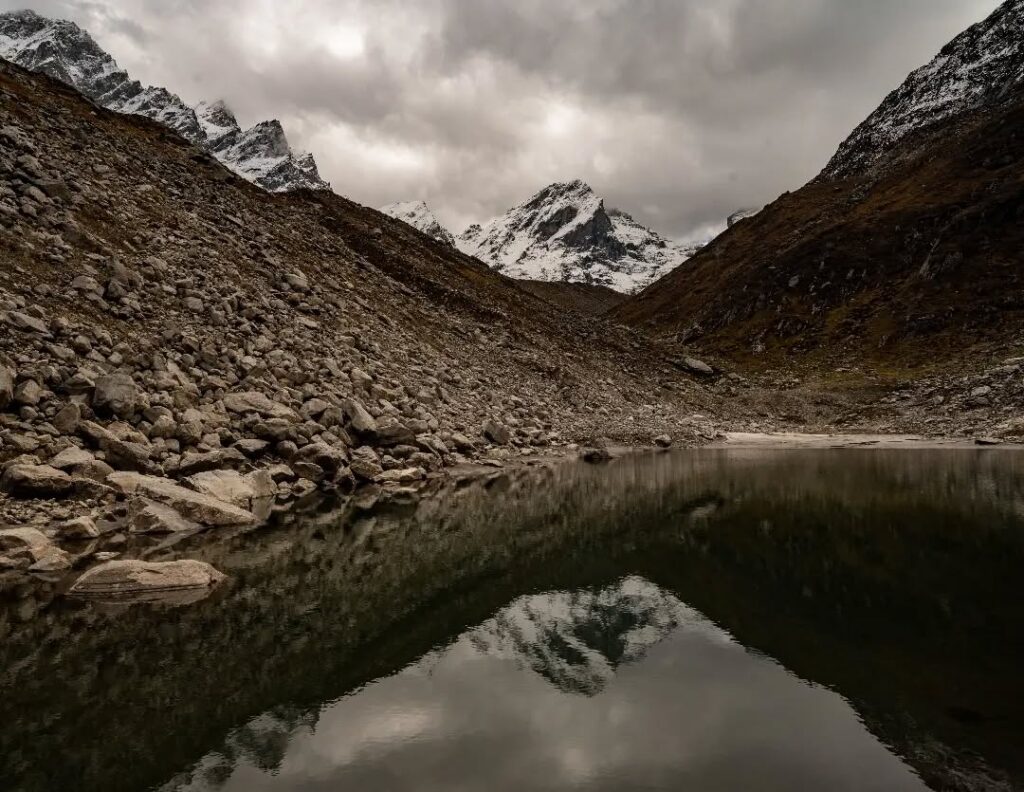
If you are someone who loves exploring offbeat places, here are some hidden spots near Hemkund Sahib that most people don’t know about:
1. Kagbhusandi Lake
- Altitude: 5,230 meters
- Starting point: Near Bhyundar village
- Trek duration: 4–5 days
- Why visit: A quiet emerald lake surrounded by tall mountains
- Peaks nearby: Hathi Parvat and Ghori Parvat
Kagbhusandi lake is believed to be shaped like the eye of Garuda, a divine bird from Hindu mythology. It is far less visited, so it offers complete peace and natural beauty.
2. Bankund Glacier
The Bankund Glacier is the main source of water for the Hemkund Lake. Very few people trek here, as the trail is tough and not marked. But if you go with a local guide, it is possible to explore this area.
3. Bhyundar Khal Pass
This old route once connected the Valley of Flowers to the Nanda Devi Biosphere, which is now a protected area. The full pass is closed for visitors, but you can still explore the ridge area around it.
Peaks visible from here include:
- Trisul (7,120 m)
- Nanda Ghunti (6,309 m)
Staying in Ghangaria and Govindghat
Ghangaria has simple hotels, lodges, and guesthouses. Most are basic, but clean. You can also stay at the Gurudwara, which offers free rooms and food for pilgrims.
Govindghat has more hotel options, including parking for those coming by car.
What to Carry
- Warm clothes (even in summer it gets very cold)
- Raincoat or poncho (weather changes fast)
- Trekking shoes
- Water bottle
- Basic medicines and energy snacks
- Sunscreen and sunglasses
- ID proof for checkposts
Avoid carrying plastic bags or bottles. The area is eco-sensitive and needs to be kept clean.
Best Time to Visit
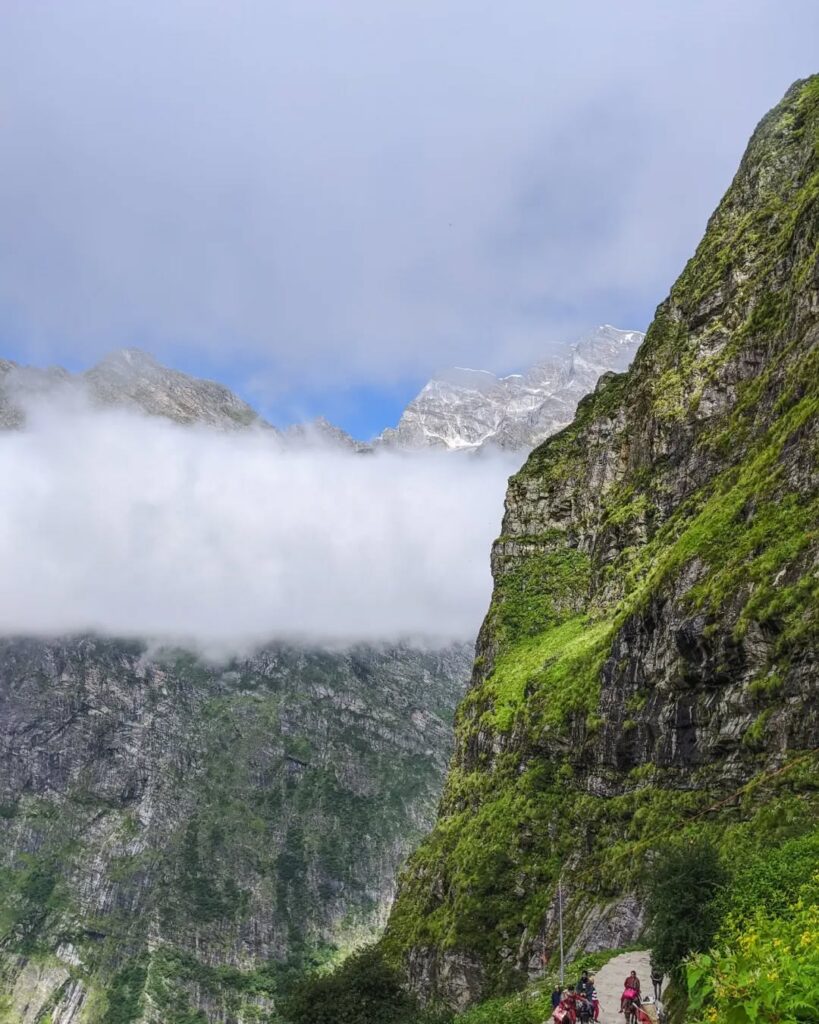
- June to October is the trekking season.
- June and early July: Snow starts melting, fewer people
- July to August: Flowers bloom in Valley of Flowers
- September to early October: Clear skies, fewer crowds, and better views
Avoid visiting during the monsoon (late July) if there are landslides or heavy rains reported.
Important Travel Tips
- Rest and acclimatize in Ghangaria before going to Hemkund Sahib
- Take breaks during the steep climb
- Drink enough water but avoid overexertion
- Respect the silence and spirit of the place
- Use local guides for offbeat treks
A Place That Stays in Your Heart
Many people who visit Hemkund Sahib describe it as an experience they can never forget. It’s not just the beautiful mountains or the peaceful lake. It’s something deeper, a sense of calm and clarity.
Whether you are religious or not, Hemkund Sahib offers a kind of quiet that is hard to find in everyday life. It teaches you to slow down, breathe in the cold mountain air, and listen, not just with your ears, but with your heart.
If you’re ready for a journey that touches both your body and your soul, Hemkund Sahib is waiting for you.
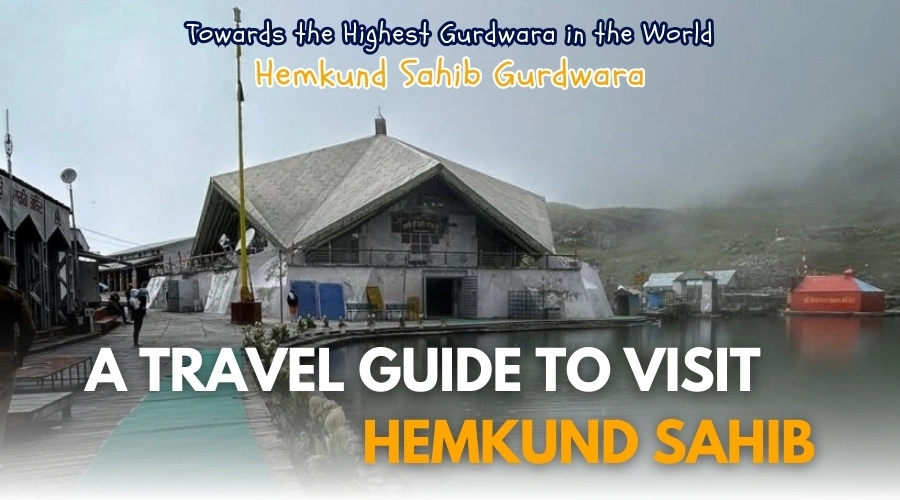
Leave a Comment